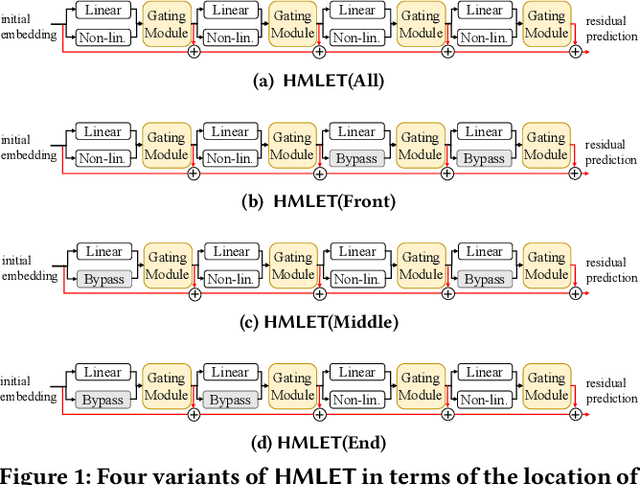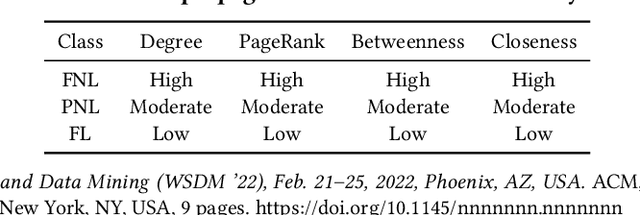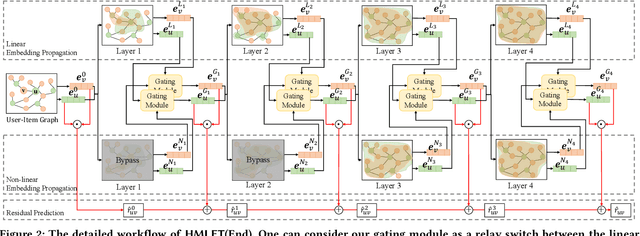Taeri Kim
MART: MultiscAle Relational Transformer Networks for Multi-agent Trajectory Prediction
Jul 31, 2024Abstract:Multi-agent trajectory prediction is crucial to autonomous driving and understanding the surrounding environment. Learning-based approaches for multi-agent trajectory prediction, such as primarily relying on graph neural networks, graph transformers, and hypergraph neural networks, have demonstrated outstanding performance on real-world datasets in recent years. However, the hypergraph transformer-based method for trajectory prediction is yet to be explored. Therefore, we present a MultiscAle Relational Transformer (MART) network for multi-agent trajectory prediction. MART is a hypergraph transformer architecture to consider individual and group behaviors in transformer machinery. The core module of MART is the encoder, which comprises a Pair-wise Relational Transformer (PRT) and a Hyper Relational Transformer (HRT). The encoder extends the capabilities of a relational transformer by introducing HRT, which integrates hyperedge features into the transformer mechanism, promoting attention weights to focus on group-wise relations. In addition, we propose an Adaptive Group Estimator (AGE) designed to infer complex group relations in real-world environments. Extensive experiments on three real-world datasets (NBA, SDD, and ETH-UCY) demonstrate that our method achieves state-of-the-art performance, enhancing ADE/FDE by 3.9%/11.8% on the NBA dataset. Code is available at https://github.com/gist-ailab/MART.
VITA: 'Carefully Chosen and Weighted Less' Is Better in Medication Recommendation
Dec 19, 2023Abstract:We address the medication recommendation problem, which aims to recommend effective medications for a patient's current visit by utilizing information (e.g., diagnoses and procedures) given at the patient's current and past visits. While there exist a number of recommender systems designed for this problem, we point out that they are challenged in accurately capturing the relation (spec., the degree of relevance) between the current and each of the past visits for the patient when obtaining her current health status, which is the basis for recommending medications. To address this limitation, we propose a novel medication recommendation framework, named VITA, based on the following two novel ideas: (1) relevant-Visit selectIon; (2) Target-aware Attention. Through extensive experiments using real-world datasets, we demonstrate the superiority of VITA (spec., up to 5.56% higher accuracy, in terms of Jaccard, than the best competitor) and the effectiveness of its two core ideas. The code is available at https://github.com/jhheo0123/VITA.
MONET: Modality-Embracing Graph Convolutional Network and Target-Aware Attention for Multimedia Recommendation
Dec 15, 2023



Abstract:In this paper, we focus on multimedia recommender systems using graph convolutional networks (GCNs) where the multimodal features as well as user-item interactions are employed together. Our study aims to exploit multimodal features more effectively in order to accurately capture users' preferences for items. To this end, we point out following two limitations of existing GCN-based multimedia recommender systems: (L1) although multimodal features of interacted items by a user can reveal her preferences on items, existing methods utilize GCN designed to focus only on capturing collaborative signals, resulting in insufficient reflection of the multimodal features in the final user/item embeddings; (L2) although a user decides whether to prefer the target item by considering its multimodal features, existing methods represent her as only a single embedding regardless of the target item's multimodal features and then utilize her embedding to predict her preference for the target item. To address the above issues, we propose a novel multimedia recommender system, named MONET, composed of following two core ideas: modality-embracing GCN (MeGCN) and target-aware attention. Through extensive experiments using four real-world datasets, we demonstrate i) the significant superiority of MONET over seven state-of-the-art competitors (up to 30.32% higher accuracy in terms of recall@20, compared to the best competitor) and ii) the effectiveness of the two core ideas in MONET. All MONET codes are available at https://github.com/Kimyungi/MONET.
Phishing URL Detection: A Network-based Approach Robust to Evasion
Sep 03, 2022



Abstract:Many cyberattacks start with disseminating phishing URLs. When clicking these phishing URLs, the victim's private information is leaked to the attacker. There have been proposed several machine learning methods to detect phishing URLs. However, it still remains under-explored to detect phishing URLs with evasion, i.e., phishing URLs that pretend to be benign by manipulating patterns. In many cases, the attacker i) reuses prepared phishing web pages because making a completely brand-new set costs non-trivial expenses, ii) prefers hosting companies that do not require private information and are cheaper than others, iii) prefers shared hosting for cost efficiency, and iv) sometimes uses benign domains, IP addresses, and URL string patterns to evade existing detection methods. Inspired by those behavioral characteristics, we present a network-based inference method to accurately detect phishing URLs camouflaged with legitimate patterns, i.e., robust to evasion. In the network approach, a phishing URL will be still identified as phishy even after evasion unless a majority of its neighbors in the network are evaded at the same time. Our method consistently shows better detection performance throughout various experimental tests than state-of-the-art methods, e.g., F-1 of 0.89 for our method vs. 0.84 for the best feature-based method.
Linear, or Non-Linear, That is the Question!
Nov 14, 2021



Abstract:There were fierce debates on whether the non-linear embedding propagation of GCNs is appropriate to GCN-based recommender systems. It was recently found that the linear embedding propagation shows better accuracy than the non-linear embedding propagation. Since this phenomenon was discovered especially in recommender systems, it is required that we carefully analyze the linearity and non-linearity issue. In this work, therefore, we revisit the issues of i) which of the linear or non-linear propagation is better and ii) which factors of users/items decide the linearity/non-linearity of the embedding propagation. We propose a novel Hybrid Method of Linear and non-linEar collaborative filTering method (HMLET, pronounced as Hamlet). In our design, there exist both linear and non-linear propagation steps, when processing each user or item node, and our gating module chooses one of them, which results in a hybrid model of the linear and non-linear GCN-based collaborative filtering (CF). The proposed model yields the best accuracy in three public benchmark datasets. Moreover, we classify users/items into the following three classes depending on our gating modules' selections: Full-Non-Linearity (FNL), Partial-Non-Linearity (PNL), and Full-Linearity (FL). We found that there exist strong correlations between nodes' centrality and their class membership, i.e., important user/item nodes exhibit more preferences towards the non-linearity during the propagation steps. To our knowledge, we are the first who designs a hybrid method and reports the correlation between the graph centrality and the linearity/non-linearity of nodes. All HMLET codes and datasets are available at: https://github.com/qbxlvnf11/HMLET.
 Add to Chrome
Add to Chrome Add to Firefox
Add to Firefox Add to Edge
Add to Edge